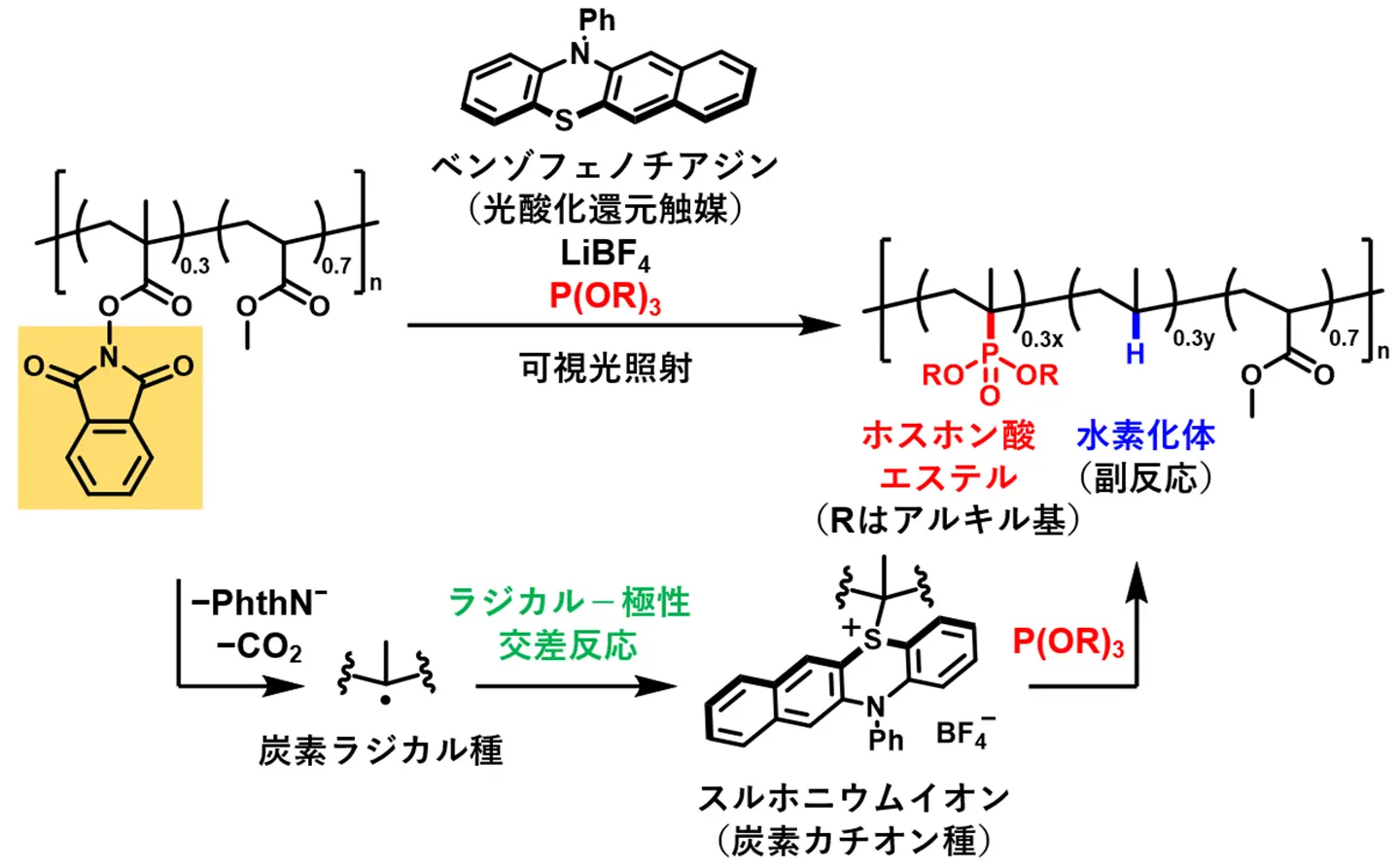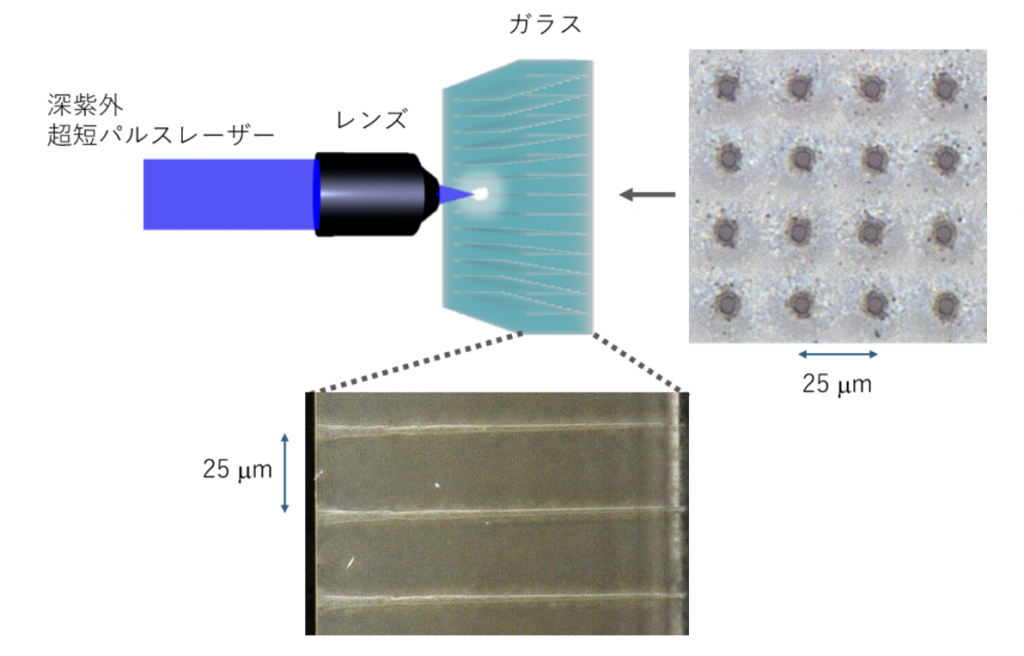2025-06-02 東京科学大学

図2. 光酸化還元触媒を用いたラジカル-極性交差反応による高分子へのホスホン酸エステルの導入(本研究)
<関連情報>
- https://www.isct.ac.jp/ja/news/xq88z71eg23q
- https://www.isct.ac.jp/plugins/cms/component_download_file.php?type=2&pageId=&contentsId=1&contentsDataId=1607&prevId=&key=13c4ca6b2ddc580d20d9ed7b94c1855c.pdf
- https://onlinelibrary.wiley.com/doi/10.1002/anie.202507572
有機光レドックス触媒を用いたラジカル‐極性クロスオーバーホスホニル化によるポリメタクリレート誘導体の後官能基化 Organophotoredox-Catalyzed Postfunctionalization of Poly(methacrylate) Derivatives via Radical–Polar Crossover Phosphonylation
Tomohiro Tamano, Dr. Kosuke Sato, Prof. Dr. Hirohisa Ohmiya, Prof. Dr. Shinsuke Inagi
Angewandte Chemie International Edition Published: 05 May 2025
DOI:https://doi.org/10.1002/anie.202507572
Graphical Abstract

The organophotoredox-catalyzed postfunctionalization of polymers with a redox-active moiety using trialkyl phosphite nucleophiles afforded the corresponding phosphonate-containing polymers via the radical–polar crossover process, in which a carbocation equivalent is generated to react with nucleophiles. This strategy provides versatile functional polymers in a simple, green, and sustainable manner.
Abstract
Photoredox-catalyzed postfunctionalization of poly(meth)acrylate-based copolymers bearing phthalimide moieties can produce novel polymer architectures that are inaccessible using polymerization approaches; however, this method is restricted to radical reactions. To expand the scope of reactions applicable to photoredox-catalyzed postfunctionalization, this study focused on the radical–polar crossover (RPC) process, in which a carbocation equivalent is generated to react with nucleophiles. The organophotoredox-catalyzed reaction of a random copolymer of N-(methacryloxy)phthalimide and methyl acrylate using trialkyl phosphite nucleophiles afforded the corresponding phosphonate-containing polymers. Although simultaneous hydrogenation was inevitable, a novel polymer comprising dialkyl isopropenylphosphonate, propylene, and methyl acrylate units was obtained, which is of interest because phosphonate-containing polymers are potentially applicable as thermoresponsive materials, flame-retardant materials, and additives in Li-ion batteries. A series of copolymers with different components were successfully applied to the postfunctionalization method. The organophotoredox catalysis-based postfunctionalization strategy developed in this study provides versatile functional polymers in a simple, green, and sustainable manner.



